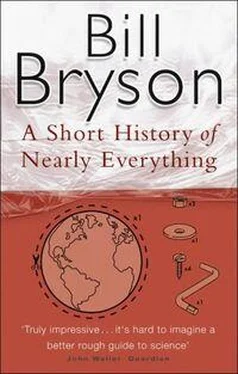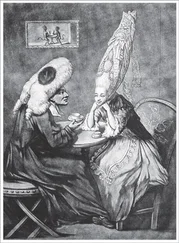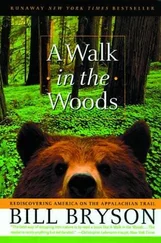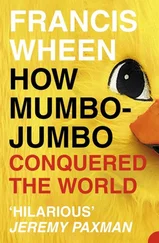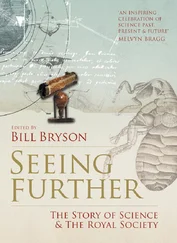The term means a number of things to different people, it appears. In November 2002, Carl Wunsch of MIT published a report in Science, “What Is the Thermohaline Circulation?,” in which he noted that the expression has been used in leading journals to signify at least seven different phenomena (circulation at the abyssal level, circulation driven by differences in density or buoyancy, “meridional overturning circulation of mass,” and so on)-though all have to do with ocean circulations and the transfer of heat, the cautiously vague and embracing sense in which I have employed it here.
The indigestible parts of giant squid, in particular their beaks, accumulate in sperm whales’ stomachs into the substance known as ambergris, which is used as a fixative in perfumes. The next time you spray on Chanel No. 5 (assuming you do), you may wish to reflect that you are dousing yourself in distillate of unseen sea monster.
There are actually twenty-two naturally occurring amino acids known on Earth, and more may await discovery, but only twenty of them are necessary to produce us and most other living things. The twenty-second, called pyrrolysine, was discovered in 2002 by researchers at Ohio State University and is found only in a single type of archaean (a basic form of life that we will discuss a little further on in the story) called Methanosarcina barkeri.
To illustrate, humans are in the domain eucarya, in the kingdom animalia, in the phylum chordata, in the subphylum vertebrata, in the class mammalia, in the order primates, in the family hominidae, in the genus homo, in the species sapiens. (The convention, I’m informed, is to italicize genus and species names, but not those of higher divisions.) Some taxonomists employ further subdivisions: tribe, suborder, infraorder, parvorder, and more.
The formal word for a zoological category, such as phylum or genus. The plural is taxa.
We are actually getting worse at some matters of hygiene. Dr. Maunder believes that the move toward low-temperature washing machine detergents has encouraged bugs to proliferate. As he puts it: “If you wash lousy clothing at low temperatures, all you get is cleaner lice.”
Actually, quite a lot of cells are lost in the process of development, so the number you emerge with is really just a guess. Depending on which source you consult the number can vary by several orders of magnitude. The figure of ten thousand trillion (or quadrillion) is from Margulis and Sagan, 1986.
Leeuwenhoek was close friends with another Delft notable, the artist Jan Vermeer. In the mid-1660s, Vermeer, who previously had been a competent but not outstanding artist, suddenly developed the mastery of light and perspective for which he has been celebrated ever since. Though it has never been proved, it has long been suspected that he used a camera obscura, a device for projecting images onto a flat surface through a lens. No such device was listed among Vermeer’s personal effects after his death, but it happens that the executor of Vermeer’s estate was none other than Antoni van Leeuwenhoek, the most secretive lens-maker of his day.
An auspicious date in history: on the same day in Kentucky, Abraham Lincoln was born.
Darwin was one of the few to guess correctly. He happened to be visiting Chambers one day when an advance copy of the sixth edition of Vestiges was delivered. The keenness with which Chambers checked the revisions was something of a giveaway, though it appears the two men did not discuss it.
By coincidence, in 1861, at the height of the controversy, just such evidence turned up when workers in Bavaria found the bones of an ancient archaeopteryx, a creature halfway between a bird and a dinosaur. (It had feathers, but it also had teeth.) It was an impressive and helpful find, and its significance much debated, but a single discovery could hardly be considered conclusive.
In 1968, Harvard University Press canceled publication of The Double Helix after Crick and Wilkins complained about its characterizations, which the science historian Lisa Jardine has described as “gratuitously hurtful.” The descriptions quoted above are after Watson softened his comments.
Junk DNA does have a use. It is the portion employed in DNA fingerprinting. Its practicality for this purpose was discovered accidentally by Alec Jeffreys, a scientist at the University of Leicester in England. In 1986 Jeffreys was studying DNA sequences for genetic markers associated with heritable diseases when he was approached by the police and asked if he could help connect a suspect to two murders. He realized his technique ought to work perfectly for solving criminal cases-and so it proved. A young baker with the improbable name of Colin Pitchfork was sentenced to two life terms in prison for the murders.
Though Dutch, Dubois was from Eijsden, a town bordering the French-speaking part of Belgium.
Humans are put in the family Hominidae. Its members, traditionally called hominids, include any creatures (including extinct ones) that are more closely related to us than to any surviving chimpanzees. The apes, meanwhile, are lumped together in a family called Pongidae. Many authorities believe that chimps, gorillas, and orangutans should also be included in this family, with humans and chimps in a subfamily called Homininae. The upshot is that the creatures traditionally called hominids become, under this arrangement, hominins. (Leakey and others insist on that designation.) Hominoidea is the name of the ape superfamily, which includes us.
Absolute brain size does not tell you everything-or possibly sometimes even much. Elephants and whales both have brains larger than ours, but you wouldn’t have much trouble outwitting them in contract negotiations. It is relative size that matters, a point that is often overlooked. As Gould notes, A. africanus had a brain of only 450cc, smaller than that of a gorilla. But a typical africanus male weighed less than a hundred pounds, and a female much less still, whereas gorillas can easily top out at 600 pounds. (Ever Since Darwin 181-3)
One possibility is that Neandertals and Cro-Magnons had different numbers of chromosomes, a complication that commonly arises when species that are close but not quite identical conjoin. In the equine world, for example, horses have 64 chromosomes and donkeys 62. Mate the two and you get an offspring with a reproductively useless number of chromosomes, 63. You have, in short, a sterile mule.
